If you own a Bird of Paradise plant, chances are you’ve noticed curling leaves sprouting here and there. Don’t stress out – this can happen to all kinds of plants as they grow and mature! But when your Bird of Paradise (BOP) begins to show signs of leaf curling, it might be time to check on the health of your beloved tropical friend.
Learn more about how to recognize the causes behind BOP leaf curling and what you can do about it in this blog post! We’ll cover everything from basic BOP care instructions for disease prevention to specific tips for handling those ever-important healthy, colorful leaves. Read on to find out how you can make sure that delicate beauty thrives!
What is the Bird of Paradise Plant?
The Bird of Paradise plant is an exotic, evergreen perennial from South Africa. Its vibrant colors and unique shape make it a popular choice for landscaping and indoor gardens. The showy inflorescences are the defining characteristic of this plant, made up of bright orange sepals and blue-and-purple petals that resemble the head and beak of a bird in flight.
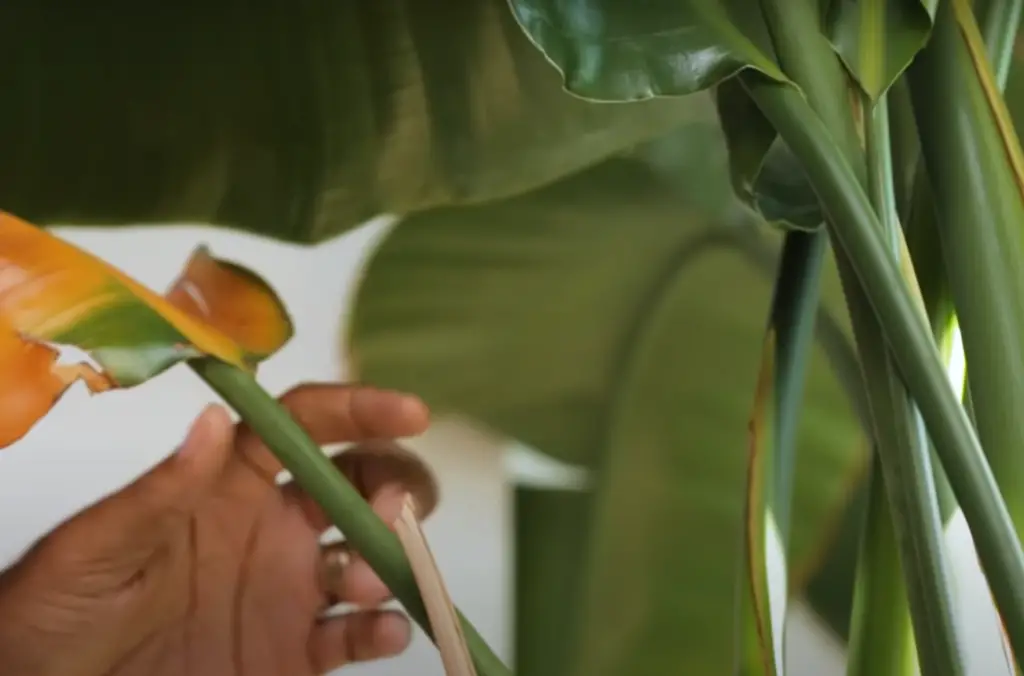
In addition to its striking visual appeal, the Bird of Paradise also has several special characteristics that set it apart from other plants: [1]
- It’s able to survive in both warm and cooler climates, making it easy to grow indoors or out.
- The leaves are deep green with rough textures, adding texture to landscapes or containers.
- The roots are shallow and fibrous, which makes it difficult for them to be uprooted or blown away in strong winds.
- It requires little maintenance and is relatively easy to care for.
- The flowers have a long blooming season from late winter through fall.
- The plant can reach up to 10 feet tall, adding great height and drama to the garden.
- The Bird of Paradise produces a beautiful sweet scent that spreads throughout the area when in bloom. [2]
These special characteristics make the Bird of Paradise an ideal plant for adding color and texture to any indoor or outdoor environment. With proper care, it can thrive for many years, providing year-round beauty. Whether planted in a container or used as a focal point in the garden, this is one plant you won’t want to miss out on.
How to Grow a Bird of Paradise Plant?
The Bird of Paradise plant requires a location with plenty of bright, direct sunlight (at least six hours per day).
In warmer climates the Bird of Paradise may be planted outside in a sunny spot, though it needs protection from extreme cold and wind. In cooler climates, it does best indoors near a south or western facing window. You can also use artificial lighting to provide adequate light for indoor plants.
This plant needs well-draining soil that is slightly acidic (pH 6.0-7.5). A potting mix made especially for tropical plants works well. You can also add some sand or perlite to help with drainage. When repotting, use a container that is just one size larger than the previous pot and avoid over-watering. [3]
The Bird of Paradise enjoys regular watering but should not be allowed to sit in water for extended periods of time as this will lead to root rot. Water your plant when the top two inches of soil are dry and reduce watering during the cooler months.
Fertilize once a month during spring and summer with a balanced liquid fertilizer at half strength. Avoid fertilizing it in fall and winter when growth slows down. Prune away any dead or wilted leaves or stems, taking care not to cut into new growth. Additionally, occasionally wiping the leaves with a damp cloth will keep them looking attractive. [4]
How to Care for the Bird of Paradise Plant?
The Bird of Paradise plant is an exotic and striking houseplant that can make a great addition to any home. It requires specific care in order to thrive, so it’s important to understand the basics of taking care of them.
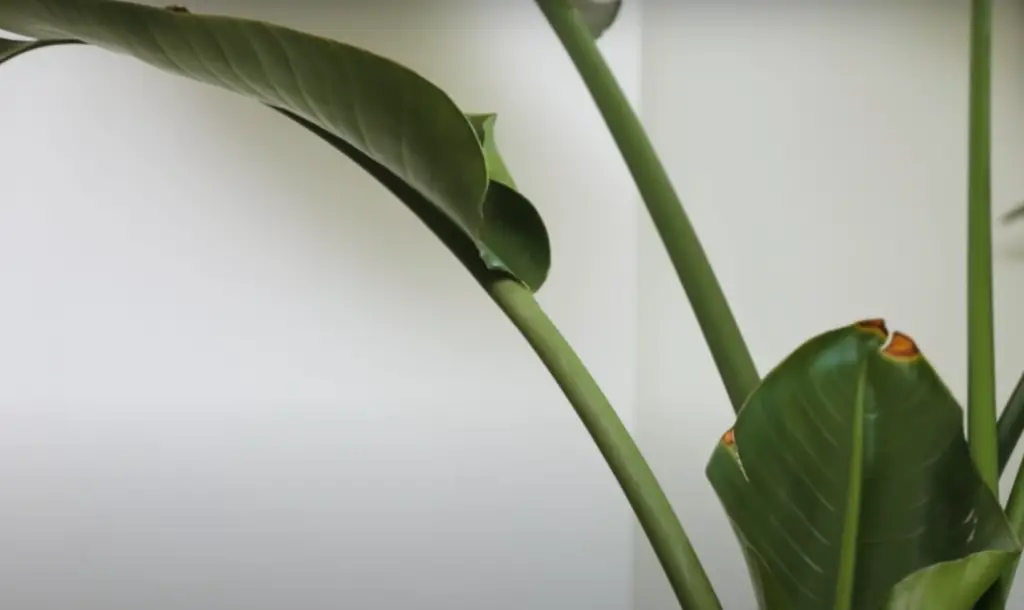
Here are some tips on how to properly look after your Bird of Paradise plant:
- Choose the right spot – it thrives best when placed in bright indirect light, such as a south or west facing window. Avoid direct sunlight as this could burn delicate leaves.
- Watering – allow the soil to dry out before watering again. In winter months, you can reduce watering significantly but do not allow the soil to dry out completely. Overwatering can cause root rot.
- Fertilization – feed the Bird of Paradise plant with a balanced fertilizer every two weeks during the growing season, usually between April and September. Reduce fertilizing to once or twice during winter months.
- Pruning & Potting – remove any dead leaves or stems as needed and re-pot your Bird of Paradise when it starts to become root bound by choosing a pot one size up from its current one. [5]
Following these guidelines will help keep your Bird of Paradise happy and healthy for many years!
Is the Bird of Paradise Suitable for Gardening?
The Bird of Paradise is undoubtedly a stunning and majestic flower that can add real beauty to any garden. Its large, tropical foliage and unique flowers with their impressive crest-like shape make it an ideal plant for adding a touch of exotic charm to your outdoor living space. However, while the Bird of Paradise looks great, it may not be suitable for every type of garden.
Given its tropical origins, the Bird of Paradise does best in warm climates.
In addition, these plants require plenty of sunlight and regular watering (although they are drought-tolerant) to thrive.The Bird of Paradise is a vigorous grower and will quickly take over any garden bed it is planted in if not given enough space. Be sure to provide plenty of room for this plant or consider growing it in a container instead. With the right care, the Bird of Paradise can be an excellent addition to any garden—just make sure you understand its needs before planting.
What Plants Are Great Companions with Bird of Paradise Plants?
A companion plant is a type of plant that benefits another plant when grown in close proximity. Companion planting uses the natural characteristics of certain plants to create a microclimate for optimal growth and pest control. Companion plants are often used to attract beneficial insects, deter pests, break up soil compactness, or provide shade or windbreaks.
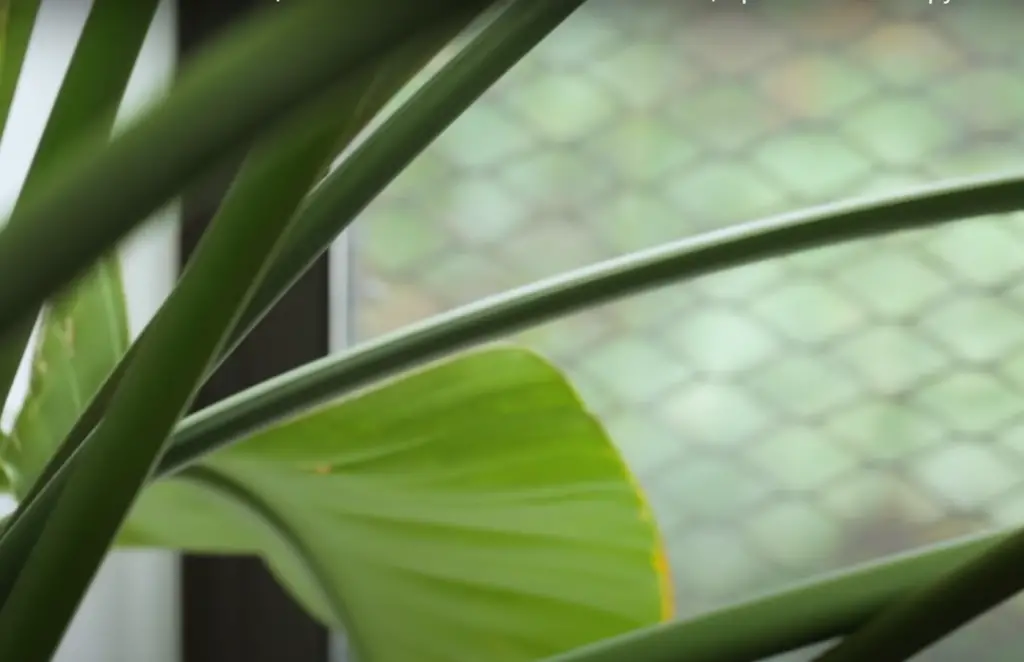
When planting Bird of Paradise, it is important to ensure they are planted near compatible companion plants. Some good companion plants for Bird of Paradise include:
- Crotons – These colorful foliage plants offer a vibrant contrast to the tropical look and feel of Bird of Paradise.
- Palms – Palms bring a tropical ambiance to any garden and make great companions for the Bird of Paradise plant. They add texture and color without taking over the space with their size.
- Ferns – Since both ferns and Birds of Paradise require similar growing conditions, they make excellent companions in the garden. Choose from a variety of types to find one that will fit your particular aesthetic needs.
- Hibiscus – The showy blooms of the hibiscus plant will add a lively splash of color that contrasts nicely with Bird of Paradise’s unique foliage. [6]
- Succulents – They bring texture and interesting shapes to the garden, while also being easy to care for and drought tolerant. They are perfect for those who want an eye-catching garden without needing to put in too much effort.
- Ivy – Ivy is another great companion plant for Bird of Paradise as it provides a delicate webbing along the ground that can help keep weeds away from the larger bird-of-paradise plants.
- Ornamental grasses – Ornamental grasses offer a low-maintenance, soft texture to any garden landscape. They can help bring out the beauty of Bird of Paradise even more. [7]
By carefully selecting companion plants that suit both your taste and growing conditions, you can create a beautiful landscape around your Bird of Paradise plants that will be sure to draw attention wherever it is planted!
What Diseases Can Bird of Paradise Plant Attack?
The Bird of Paradise plant is susceptible to a variety of diseases, including root rot, leaf spot disease, and stem rot.
- Root rot is a common problem in Bird of Paradise plants. It occurs when the plant’s roots are exposed to too much moisture, leading to fungal growth. Common symptoms of root rot include stunted growth and yellowing leaves. If left unchecked, it can kill the entire plant.
- Leaf spot disease is caused by several different fungi and causes spots on the leaves of Bird of Paradise plants. The spots will be either dark or light colored and are usually surrounded by a yellow halo and have irregular shape. If left untreated, leaf spot disease can cause severe foliage damage and even death of the plant.
- Stem rot is another common infection in Bird of Paradise plants caused by various species of Phytophthora fungi that invade the stem. Symptoms of stem rot include wilting, yellowing, and blackening of the foliage. If left untreated, it can spread to other parts of the plant and eventually lead to death. It is important to remove any infected stems immediately and discard them in a sealed bag or container. It is also essential to provide good air circulation around the plant by pruning back surrounding plants that block airflow. [8]
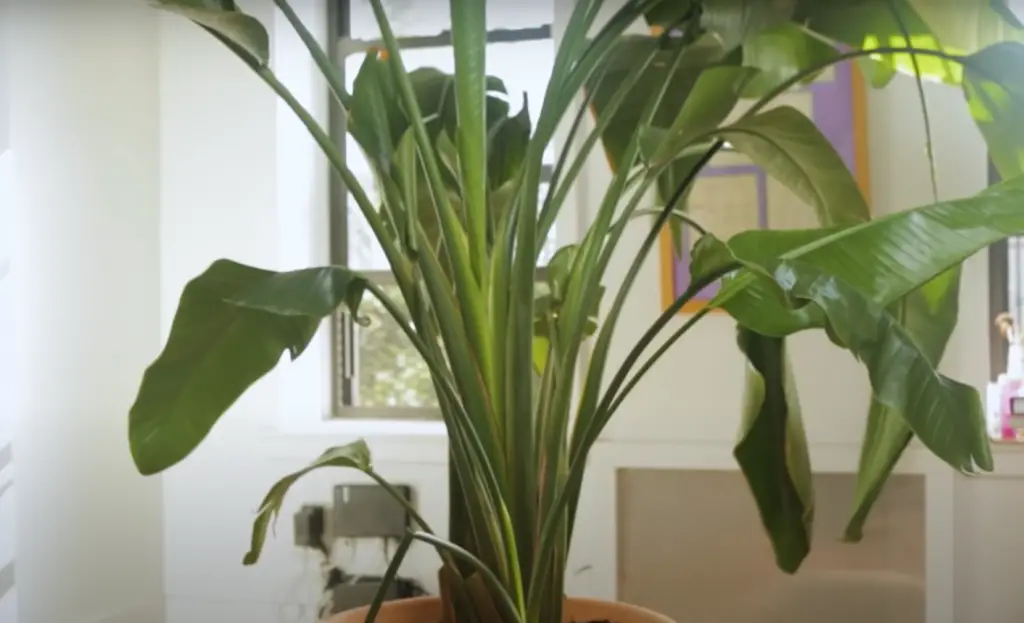
It is vital to note that all three of these diseases can be prevented with proper care and maintenance of the Bird of Paradise plant. Be sure to water your plant correctly, provide adequate sunlight and ventilation, use fertilizers correctly, and inspect your plant regularly for signs of disease or pests. Regular pruning and deadheading will help keep the plant healthy and free from disease. Finally, be sure to treat any suspected infections with a variety of fungicides or other treatments recommended by your local garden center. Taking these precautions will help ensure that your Bird of Paradise plant stays healthy and beautiful for many years to come.
Which Plants Suffer From Leaf Curling?
Leaf curling can affect many different types of plants from trees to shrubs. Common tree species that suffer from leaf curling include elms, maples, oaks, and poplars.
Many annuals and perennials such as roses, petunias, impatiens and begonias can also suffer from leaf curling due to environmental stressors or diseases. Some vegetables are also affected by leaf curling including tomatoes, peppers, and squash.In most cases the cause of the leaf curling is related to improper watering or inadequate nutrition in the soil. Other causes of leaf curling may include environmental stressors such as extreme temperatures or pest infestations. If you suspect your plants are suffering from leaf curling, it’s important to first determine the cause before attempting to treat the problem. Treatment methods will vary depending on the type of plant and the suspected cause of the leaf curling.
In some cases, providing adequate amounts of water and fertilizer can help reverse the effects of leaf curling in plants affected by nutrient deficiencies or improper watering. If pests are causing the problem, then insecticides may need to be applied in order to reduce their populations and minimize further damage. Severe cases may require professional help in order to identify and address any underlying issues that may be contributing to the problem.
It’s essential to monitor your plants closely for signs of leaf curling in order to identify and address any underlying problems quickly before they become worse. Paying attention to environmental factors such as temperature, humidity, and water levels can also help reduce the risk of leaf curling in your plants. [9]
10 Reasons for Bird Of Paradise Leaves Curling
Too Much Sun
Bird of Paradise plants thrive in full sun but too much can cause the leaves to curl. If your plant is located in an area that receives direct sunlight for more than 8 hours a day, you may need to move it or provide some shade during the hottest part of the day.
Not Enough Water
These plants need plenty of water to keep their leaves from curling up. Make sure you water them regularly and thoroughly so they don’t dry out.
Poor Air Circulation
When air circulation around a Bird of Paradise is poor, its leaves start to curl as a sign of distress.
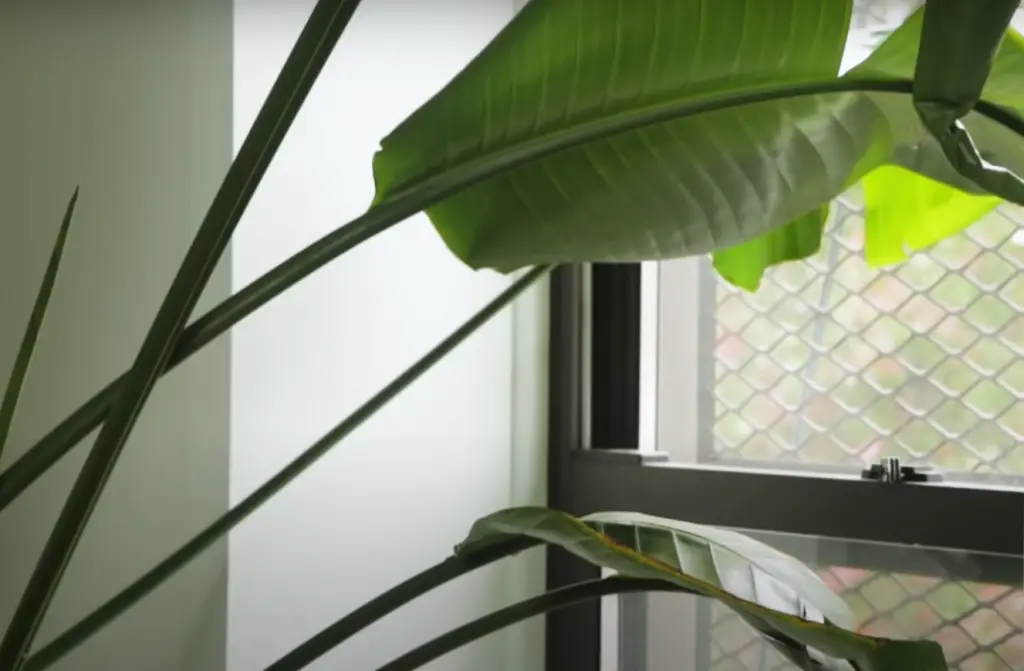
Make sure your plant has plenty of space around it so air can move freely.
Too Much Fertilizer
Over-fertilizing can cause Bird of Paradise leaves to curl up due to the intense concentration of nutrients. If you think this could be the case, cut back on fertilizer applications and flush your soil with plenty of water.
Pests or Diseases
It can be subject to infestations from scale insects, mites, and mealybugs which can cause leaves to curl as well as yellowing and discoloration. Make sure to check regularly for any signs of pests or diseases and treat them immediately if you find any.
Wrong Pot Size
Roots need room to expand so make sure that your plant is not root-bound. If your plant is in a pot that’s too small, its roots may not be able to absorb enough water and nutrients, resulting in curled leaves.
Not Enough Humidity
These plants prefer high humidity levels so if you live in a dry climate, it’s important to make sure their environment remains humid by misting the leaves regularly or using a humidifier.
Too Much Cold
These plants can handle temperatures as low as 40 degrees Fahrenheit, but any colder than this will cause the leaves to curl up due to damage from the cold air.
Repotting Shock
If you recently repotted your Bird of Paradise and its leaves are curling, you may be experiencing repotting shock. This is when a plant’s root system has been disturbed and needs time to adjust to its new environment.
Too Much Heat
The Bird of Paradise can tolerate temperatures up to 85 degrees Fahrenheit but any higher can damage their leaves and cause them to curl. Make sure they have plenty of shade during the hottest parts of the day. [10]
How to Deal with Leaves Curling on Bird Of Paradise Plants?
The first step to dealing with curled leaves on Bird Of Paradise plants is to determine the cause and take corrective action. If the environment is too dry, provide additional water, but be careful not to overwater which can cause root rot. Ensure that the location you have chosen for your plant has sufficient light without being exposed directly to direct sunlight for extended periods of time. If there is not enough light, move it to a brighter spot or use supplemental lighting from grow lights.
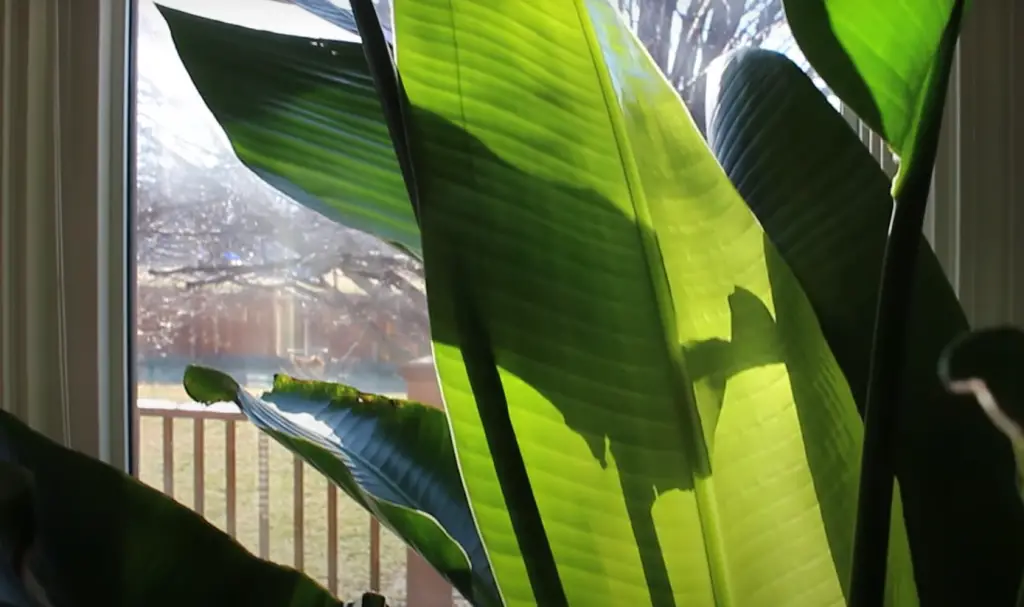
Another possible cause of curled leaves is nutrient deficiencies in the soil. If this is the case, treat your plant with a fertilizer that contains adequate amounts of nitrogen, phosphorus and potassium for optimal growth. You can also supplement with Epsom salts which provide magnesium to help restore balance to the soil.
If pests are causing the problem, inspect your plant carefully for signs of infestation and use an appropriate insecticide or pesticide to get rid of them.
Finally, bird of paradise plants prefer warm temperatures so if the environment is too cold it could be contributing to the issue. Make sure that you keep temperatures between 60-85 degrees Fahrenheit (15-30 degrees Celsius). [11]
FAQs
How do you fix curling leaves?
Curling leaves can be caused by a number of factors, such as too much water or fertilizer, low humidity levels in the air, pests, and diseases. To fix curling leaves, check for signs of pests and diseases first and treat accordingly. If no pest or disease is present then make sure the plant is getting enough light (especially if it’s an indoor plant) and adjust watering/fertilizing accordingly. Finally, increase humidity if needed with a humidifier.
How do you save a curling plant?
The best way to save a curling plant is to properly maintain it. This includes watering the plant regularly (at least once per week or when the soil begins to feel dry), fertilizing it at least twice during the growing season, and providing adequate light exposure. Additionally, trimming off any yellowed or dead leaves can help keep your curling plant looking its best. You should also avoid overwatering, as this can lead to root rot and other problems.
Can the bird of paradise leaves uncurl?
Yes. The plant is an evergreen perennial and its foliage will naturally curl up during cold weather or when the plant tends to lack water. However, when temperatures warm up and it receives adequate water, the leaves will uncurl. It’s crucial to keep in mind that too much water can lead to root rot so make sure not to overwater your bird of paradise. Additionally, you can provide some additional humidity for the plant by misting it regularly. This should help encourage more robust leaf growth and ensure that its leaves remain healthy and happy!
Will leaf curl go away on its own?
It is possible for leaf curl to go away on its own, although this usually only happens if the environmental conditions change in such a way that is more favorable to the plant. For example, if there are periods of cooler temperatures and higher humidity, the disease may become less severe or even disappear altogether. In general, however, it is best to take action against leaf curl as soon as possible in order to prevent further damage to the plant. This can include removing affected leaves or applying an appropriate fungicide treatment. Consulting your local agricultural extension office or garden center can be helpful in determining the most effective course of action for dealing with leaf curl.
Useful Video: A Bird Of Paradise Named Rhianna | House Calls With The Plant Doctor | Apartment Therapy
Final Thoughts
The Bird Of Paradise plant is unique and captivating, adding a real splash of color to any garden. With the right care and protection, it can be an incredibly rewarding addition to your outdoor space. As with any other plant, diseases may arise but with regular monitoring and treatment as necessary these can be easily managed. Overall, it is a great way to add some variety and beauty to any garden! Whether you are already an experienced gardener or are looking to start dabbling in the activity of cultivating plants, the Bird Of Paradise is an ideal place to start. Enjoy the lush colors and vibrant blooms that come with caring for this special flower!
References:
- https://www.thesill.com/blog/how-to-care-for-bird-of-paradise
- https://justfunfacts.com/interesting-facts-about-birds-of-paradise-flower/
- https://www.southernliving.com/bird-of-paradise-7371102
- https://www.bhg.com/gardening/plant-dictionary/perennial/bird-of-paradise/
- https://greeneryunlimited.co/blogs/plant-care/bird-of-paradise-care
- https://bustlingnest.com/bird-of-paradise-companion-plant/
- https://gardenine.com/bird-of-paradise-companion-plants/
- https://gardenerspath.com/plants/flowers/bird-paradise-diseases/
- https://flourishingplants.com/plant-leaves-curling/
- https://whyfarmit.com/bird-of-paradise-leaves-curling/
- https://planterhoma.com/blogs/planting-tricks-tips/bird-of-paradise-leaves-curling







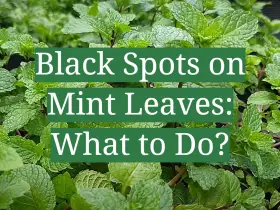
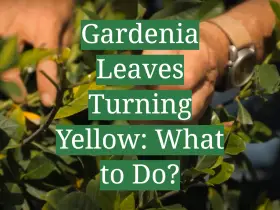

Leave a Reply
View Comments